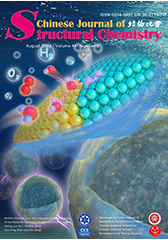
Cover Picture
Ni(OH)2 Derived from NiS2 Induced by Reflux Playing Three Roles for Hydrogen/oxygen Evolution Reaction
Sheng-Jun Xu*, Ya-Nan Zhou, Guo-Ping Shen and Bin Dong* Submit a Manuscript
Ni(OH)2 Derived from NiS2 Induced by Reflux Playing Three Roles for Hydrogen/oxygen Evolution Reaction
Sheng-Jun Xu*, Ya-Nan Zhou, Guo-Ping Shen and Bin Dong* Submit a Manuscript
WO3@Fe2O3 Core-Shell Heterojunction Photoanodes for Efficient Photoelectrochemical Water
Splitting
Guobing Mao, Heng Wu, Tianyang Qiu, Dingjie Bao, Longjie Lai, Wenguang Tu* and Qi Liu*
Chin. J. Struct. Chem. 2022, 41, 2208025-2208030 DOI: 10.14102/j.cnki.0254-5861.2022-0086
July 25, 2022
host/guest photoelectrodes, WO3, a-Fe2O3, core-shell nanostructures, one-dimensional nanoarray
ABSTRACT
Photoelectrochemical
(PEC) hydrogen production from water splitting is a green technology to convert
solar energy into renewable hydrogen fuel. The construction of host/guest
architecture in semiconductor photoanodes has been proven to be an effective strategy to improve solar-to-fuel
conversion efficiency. In this study, WO3@Fe2O3 core-shell nanoarray heterojunction photoanodes are synthesized from the in-situ decomposition of WO3@Prussian
blue (WO3@PB) and then used as host/guest photoanodes for photoelectrochemical water splitting, during which Fe2O3 serves as guest material to absorb visible solar light and WO3 can act as host scaffolds to collect electrons
at the contact. The prepared WO3@Fe2O3 shows the enhanced photocurrent density of 1.26 mA cm-2 (under
visible light) at 1.23 V vs RHE and a superior IPEC of 24.4% at 350 nm, which
is higher than that of WO3@PB
and pure WO3 (0.43 mA/cm-2 and 16.3%,
0.18 mA/cm-2 and 11.5%) respectively, owing to the efficient light-harvesting from Fe2O3 and the
enhanced electron-hole pairs
separation from the formation of type-II heterojunctions, and the direct and
ordered charge transport channels from the one-dimensional (1D) WO3 nanoarray nanostructures.
Therefore, this work provides an
alternative insight into the construction of sustainable and cost-effective photoanodes to enhance the efficiency of the
solar-driven water splitting.







